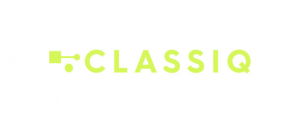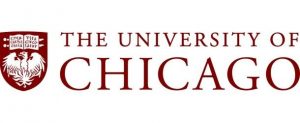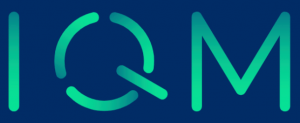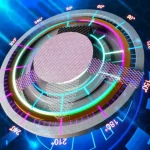Quantum News Briefs September 7: Classiq advances quantum software presence with Boston expansion; Qrypt appoints Christopher Moretti to Board of Advisors; New method from UChicago chemists using quantum dots could lead to cost-effective sensors + MORE

Quantum News Briefs September 7:
Classiq advances quantum software presence with Boston expansion
 Classiq Technologies announced on September 6 its expansion into the Boston area and the relocation of Shai Lev, vice president of strategic partnerships, to lead the company’s growth in North America. Quantum News Briefs summarizes.
Classiq Technologies announced on September 6 its expansion into the Boston area and the relocation of Shai Lev, vice president of strategic partnerships, to lead the company’s growth in North America. Quantum News Briefs summarizes.
Headquartered in Tel Aviv, Classiq has seen rapid growth over the past year as demand increases for its quantum computing software. The company’s expansion into Boston enables it to tap into the region’s bustling quantum ecosystem, renowned academic institutions and key industries pursuing quantum applications.
“As we continue our impressive momentum helping organizations develop real-world quantum applications, Boston is a clear choice for further expansion,” said Nir Minerbi, CEO and co-founder of Classiq. “The Boston area is a hub for quantum research and education with an incredible pool of quantum talent. Industries aggressively exploring quantum’s potential, such as financial services, pharmaceuticals and healthcare, are very strong there.”
Lev has been instrumental in forging partnerships with leading quantum hardware and software companies. To lead Classiq’s North America expansion, he relocated and will open the company’s Boston-area office.
“Boston has one of the highest concentrations of quantum activity today – from research at MIT, Harvard and other universities, to government-funded programs and private-sector efforts,” said Lev. “It’s exciting to represent Classiq in the Boston ecosystem and throughout North America as we introduce more organizations to our technologies and products to accelerate their journey to quantum advantage.” Click here to read the original news announcement in-entirety.
Qrypt appoints Christopher Moretti to Board of Advisors
Qrypt announced on August 30 that Christopher Moretti, vice president of global technology and cloud transformation at Evernorth Health Services, a division of The Cigna Group, is joining Qrypt’s esteemed board of advisors (BoA). Quantum News Briefs summarizes.With over 25 years of extensive experience in healthcare, financial services, business and information technology (IT) leadership, Moretti brings a wealth of knowledge and expertise in promoting data privacy and safeguarding critical sectors, including healthcare and banking, from the ever-evolving cybersecurity threat landscape.
Over the past decade, Moretti has demonstrated exceptional executive leadership at Evernorth, where he plays a crucial role in directing the company’s global engineering and infrastructure services. This includes executive supervision of security engineering, information management and cloud transformation initiatives. Prior to his tenure at Evernorth, Moretti held the position of Managing Director of Global Networks at JPMorgan Chase & Co. and held executive leadership roles during his 14-year career at General Electric and its subsidiaries, supporting insurance, consumer and commercial banking sectors. Additionally, Moretti serves as a board member and co-chair of ONUG, a collective voice of IT executives from the largest global public companies.
“With the emergence of cutting-edge technologies such as generative AI and quantum computing in industries handling personal and sensitive data, it has become evident the time for disruption in data security practices is now,” stated Moretti. “Qrypt, with its strong leadership, vision and highly respected research partnerships, is at the forefront of security innovation, protecting data from current and future threats with advanced data processing techniques. By joining Qrypt’s board, I am eager to lend my enterprise expertise to address urgent and critical data security concerns in healthcare and beyond.” Click here to read the complete announcement.
New method from UChicago chemists using quantum dots could lead to cost-effective sensors
 Scientists with the University of Chicago have demonstrated a way to create infrared light using colloidal quantum dots. Quantum News Briefs summarizes the September 5 article.
Scientists with the University of Chicago have demonstrated a way to create infrared light using colloidal quantum dots. Quantum News Briefs summarizes the September 5 article.
Infrared light has a lot of uses. In particular, it is very useful for making sensors. If you want to know whether harmful gases are coming out of your car exhaust, or test whether your breath is above the legal alcohol limit, or make sure methane gas isn’t coming out of your drill plant, for example, you use infrared light. That’s because different types of molecules will each absorb infrared light at a very specific wavelength, so they’re easy to tell apart.
“So a cost-effective and easy-to-use method to make infrared light with quantum dots could be very useful,” explained Xingyu Shen, a graduate student and first author on the new study.
The researchers said the method demonstrates great promise; the dots are already as efficient as existing conventional methods, even though the experiments are still in early stages.
The dots could someday form the basis of infrared lasers as well as small and cost-effective sensors, such as those used in exhaust emissions tests or breathalyzers.
“Right now the performance for these dots is close to existing commercial infrared light sources, and we have reason to believe we could significantly improve that,” said Philippe Guyot-Sionnest, a professor of physics and chemistry at the University of Chicago, member of the James Frank Institute, and one of three authors on the paper published in Nature Photonics. “We’re very excited for the possibilities.” Click here to read the original article in-entirety on UofChicago website.
IQM Quantum Computers launches ‘IQM Spark’ for universities and labs

IQM Quantum Computers (IQM) has launched “IQM Spark,” comprising a superconducting quantum computer and tailored learning experiences for universities and research labs worldwide. Quantum News Briefs summarizes the August 31 announcement.
IQM Spark comes pre-installed with a 5-qubit quantum processing unit, with more options available allowing for a wide variety of research experiments.
To help universities kick-start their quantum program, in addition, universities will have free maintenance for one year, and IQM will also provide training for running the system and learning materials accessible through IQM Academy, a user-friendly online platform. With IQM Spark, students of all levels (bachelor, master, and PhD) will have the opportunity to learn hands-on about quantum computing.
Additionally, universities can also provide their students with the skillset needed for a quantum-enabled future by leveraging both hardware and software within the learning materials. With its technical track record and world-class expertise, IQM is also committed to collaborating with universities to drive advancements in quantum science.
Dr. Kuan Yen Tan, Chief Technology Officer and Co-founder of IQM Quantum Computers, said: “Since our inception, we’ve invested in and promoted quantum education and the advancement of research, and it’s apparent that universities around the globe need critical tools like IQM Spark to train the workforce needed for the next generation. Given the potential of quantum computing, the ecosystem will require a wide range of talent across electronics, chip fabrication, hardware design, and software engineering. We are confident that our system will facilitate the learning experience and engage students with the physical system.”
“We’ve designed this offering for universities and research labs to build up their quantum expertise and we believe that our system will not only perform fundamental quantum experiments and raise interest in Science, Technology, Engineering, and Mathematics (STEM) but we will also advance university science around quantum computing in general, while addressing the shortage of talent and providing value for the job market,” Dr. Björn Pötter, Head of Product at IQM Quantum Computers, points out.
IQM has already delivered 5-qubit quantum computers to some universities and research institutions, including the VTT Technical Research Centre of Finland and the Leibniz Supercomputing Centre in Germany. The quantum computer at VTT has been connected to LUMI, Europe’s most powerful supercomputer, hosted by the CSC – IT Center for Science.
“VTT and IQM successfully collaborated in delivering Finland’s first quantum computer in 2021. The 5-qubit quantum computer enables users to take the first steps in developing quantum algorithms and learn how to utilise the new technology in practice”, said Pekka Pursula, Research Manager in Quantum Technologies at VTT. Click here to read announcement in-entirety.
Sandra K. Helsel, Ph.D. has been researching and reporting on frontier technologies since 1990. She has her Ph.D. from the University of Arizona.



















